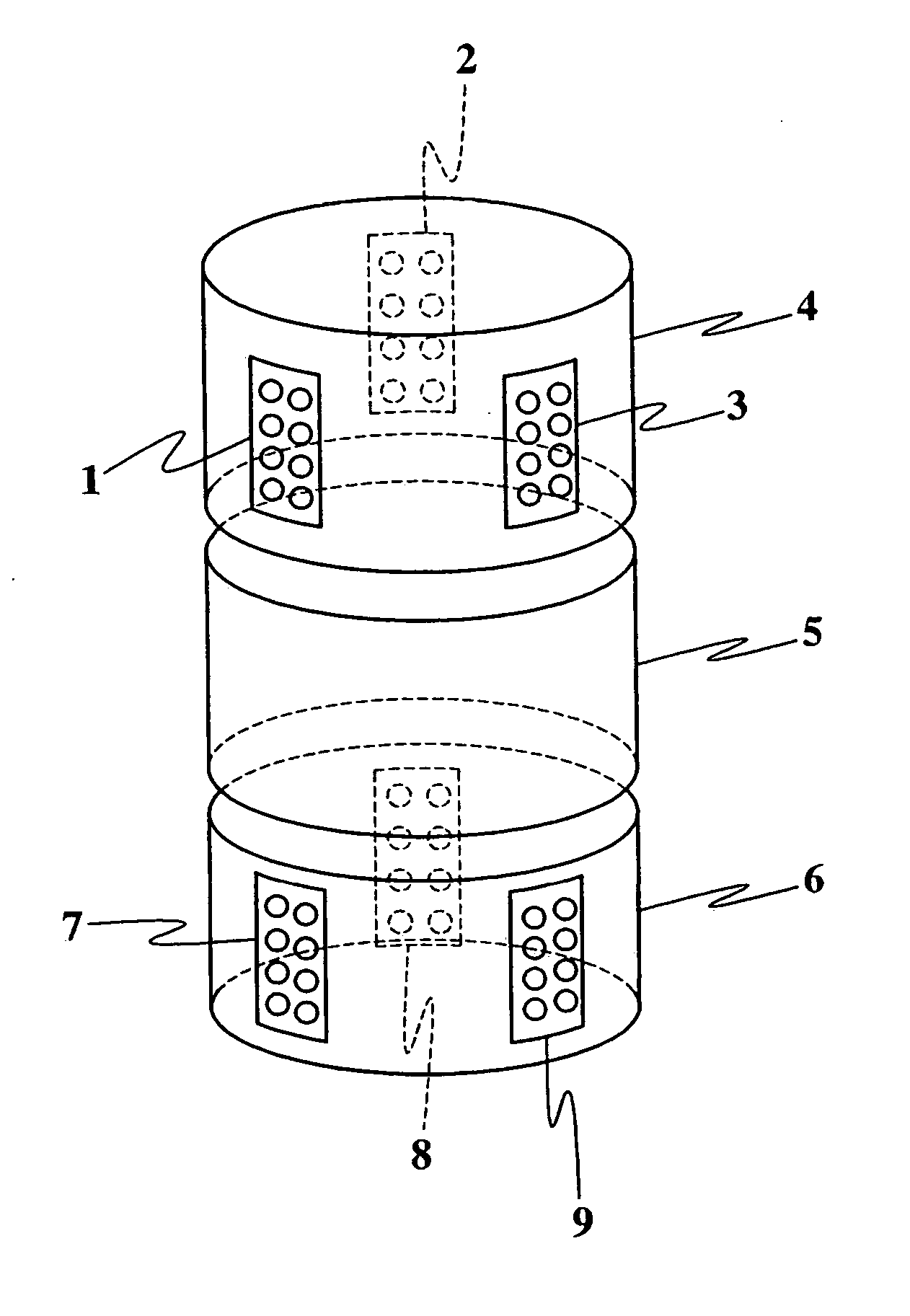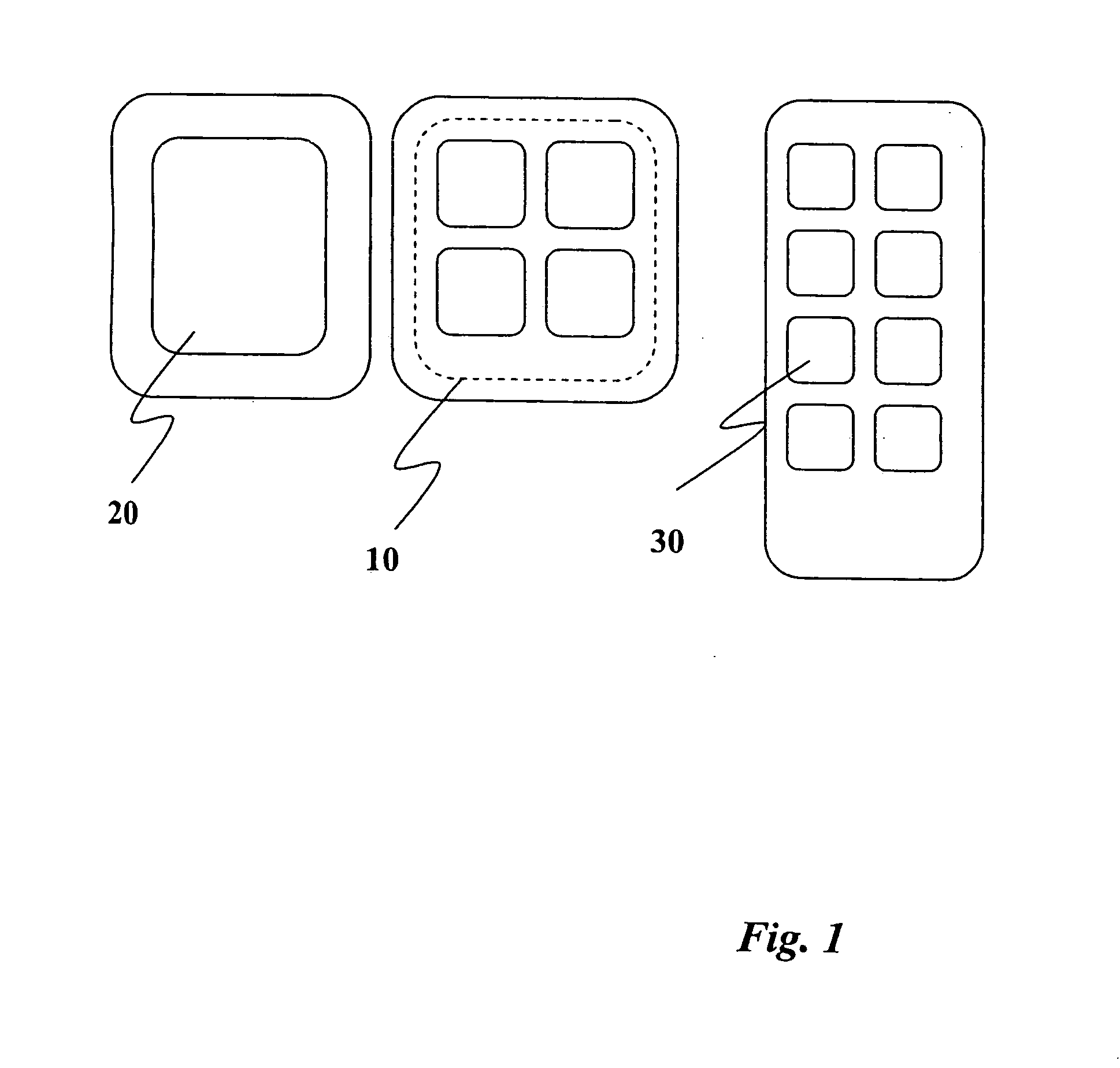Apparatus and method for repair of spinal cord injury
- Summary
- Abstract
- Description
- Claims
- Application Information
AI Technical Summary
Benefits of technology
Problems solved by technology
Method used
Image
Examples
Embodiment Construction
[0022] The apparatus for stimulating regeneration and repair of damaged spinal neurons of the present invention includes at least two electrodes that are configured to be placed intravertebrally proximal the site of spinal neurite injury and deliver direct current thereto. The electrodes include an aggregate conductive electrode surface through which the direct current is delivered to the injury site. The aggregate conductive electrode surface is sufficiently large so that the density of the delivered direct current can induce neurite regeneration and repair without generating a significant amount of toxic product in surrounding tissues.
[0023] As shown in FIG. 1, the aggregate conductive electrode surface 10 may include a single conductive surface 20 or multiple conductive sub-surfaces 30. Where multiple conductive sub-surfaces 30 are used, the result is a flattening of the trans-surface current gradient, or “skin effect,” across each sub-surface. As shown in FIG. 2, the benefit is...
PUM
 Login to View More
Login to View More Abstract
Description
Claims
Application Information
 Login to View More
Login to View More - R&D
- Intellectual Property
- Life Sciences
- Materials
- Tech Scout
- Unparalleled Data Quality
- Higher Quality Content
- 60% Fewer Hallucinations
Browse by: Latest US Patents, China's latest patents, Technical Efficacy Thesaurus, Application Domain, Technology Topic, Popular Technical Reports.
© 2025 PatSnap. All rights reserved.Legal|Privacy policy|Modern Slavery Act Transparency Statement|Sitemap|About US| Contact US: help@patsnap.com



